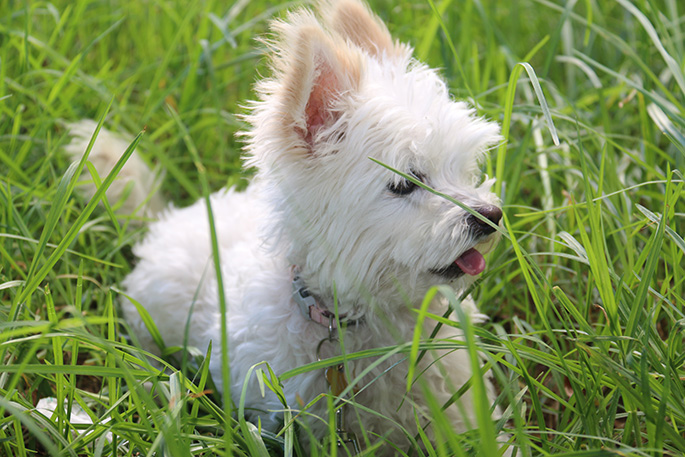Halloween can be a fun time for both pets and their owners, but it comes with some pawsitives and downsides to consider.
On the upside, dressing up Bruno or Felix in a costume can be an adorable way to include them in the festive spirit, providing fun photo opportunities and bonding moments.
However, the drawbacks include potential discomfort from costumes, and many pets may not enjoy wearing them. Costumes can also be dangerous due to choking risks from small parts like buttons or dangling pieces and can easily get caught on objects.
A few other predicaments include loud noises from trick-or-treaters that can cause anxiety, hazardous decorations and sweet treats that can pose health risks if pets get into them.
It’s important for pet owners to strike a balance between the fun and safety of their furry companions during Halloween celebrations, says Michelle Le Long, PD Insurance COO. "Unfamiliar costumes, loud noises, and constant doorbell rings can be overwhelming for them. It’s key to keep their comfort in mind to ensure it’s a treat, not a trick, for our furry family members."
Should pets wear Halloween costumes?
Pet costumes are increasing in popularity, with social media flooded with adorable images of pets in spooky, cute, and funny outfits. From skeleton suits to superhero capes, pet owners are keen to get their furry friends involved in the festive fun.
However, while dressing up pets can bring joy and Instagram-worthy moments, it’s important to do it right. “Make sure your chosen pet Halloween outfit isn’t scary or uncomfortable for your fur kids,” says Le Long.
“Dogs love action, they’re all about running, jumping and playing. Their costumes should cater to that, which means if it hinders movement, it’s a no-go. Try out the outfit in advance to see whether your pup can do things normally in and around the house.”
Costume dangers
To avoid choking hazards and accidental ingestion, choose a costume that fastens with Velcro and steer clear of strings, buttons, elastic or any other dangly bits. “Your pet could easily get an elastic neck band hooked on a gate, tree branch, door handle or something else and end up pulling so hard they get into a sticky situation,” states Le Long.
Some costumes could raise your pet’s temperature, Le Long continues. “Make sure you know how to tell if your pet is too hot. Heat exhaustion can occur when your dog’s body overheats, leading to symptoms such as excessive panting, drooling, weakness, and lethargy.”
Le Long urges pet parents to assess whether their pets are happy to wear costumes. “If your pet shows the slightest hint that they don’t like being dressed up, don’t force it. They’ll just be uncomfortable and unhappy and potentially learn fearful behaviours if you do.”
Practice makes perfect
Get your pet used to wearing the outfit beforehand, slowly, Le Long advises. “Let them wear only part of it or the whole outfit for only a few minutes then take it off again. Give them the chance to get used to their outfit over a few days.”
“If you’re after a photo with your pet in their Halloween outfit, there’s no need to keep them dressed up after you’ve taken the photo. Short and sweet can often be better to avoid discomfort or danger.”
Lollies and Chocolates: A nightmare for your dog's health
When it comes to Halloween treats, don’t share your sugary abundance with the fur kids. Sugar, especially chocolate, can be a frighteningly harmful indulgence for dogs and cats.
“Keep those sweet temptations out of paws' reach and don’t let any delicious goodies linger where curious noses can sniff them out. And remember, if you toss those empty wrappers, make sure your trash bin is pet-proof,” says Le Long.
“If you suspect something might be wrong, especially if your pet has indulged in chocolate, don’t hesitate to take them to the vet. Quick action can make all the difference and it’s better to be safe than sorry. Let’s keep the frights to the costumes and the treats to the humans,” Le Long concludes.



0 comments
Leave a Comment
You must be logged in to make a comment.